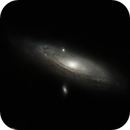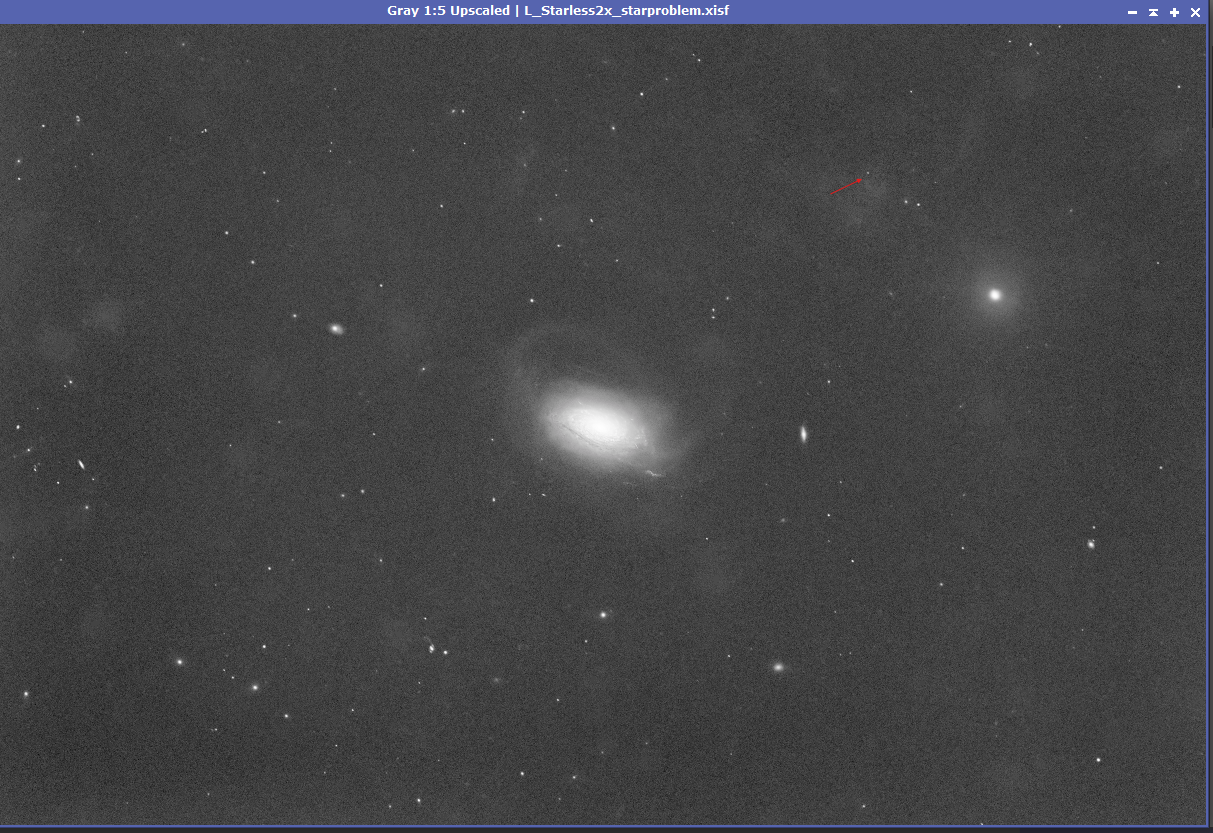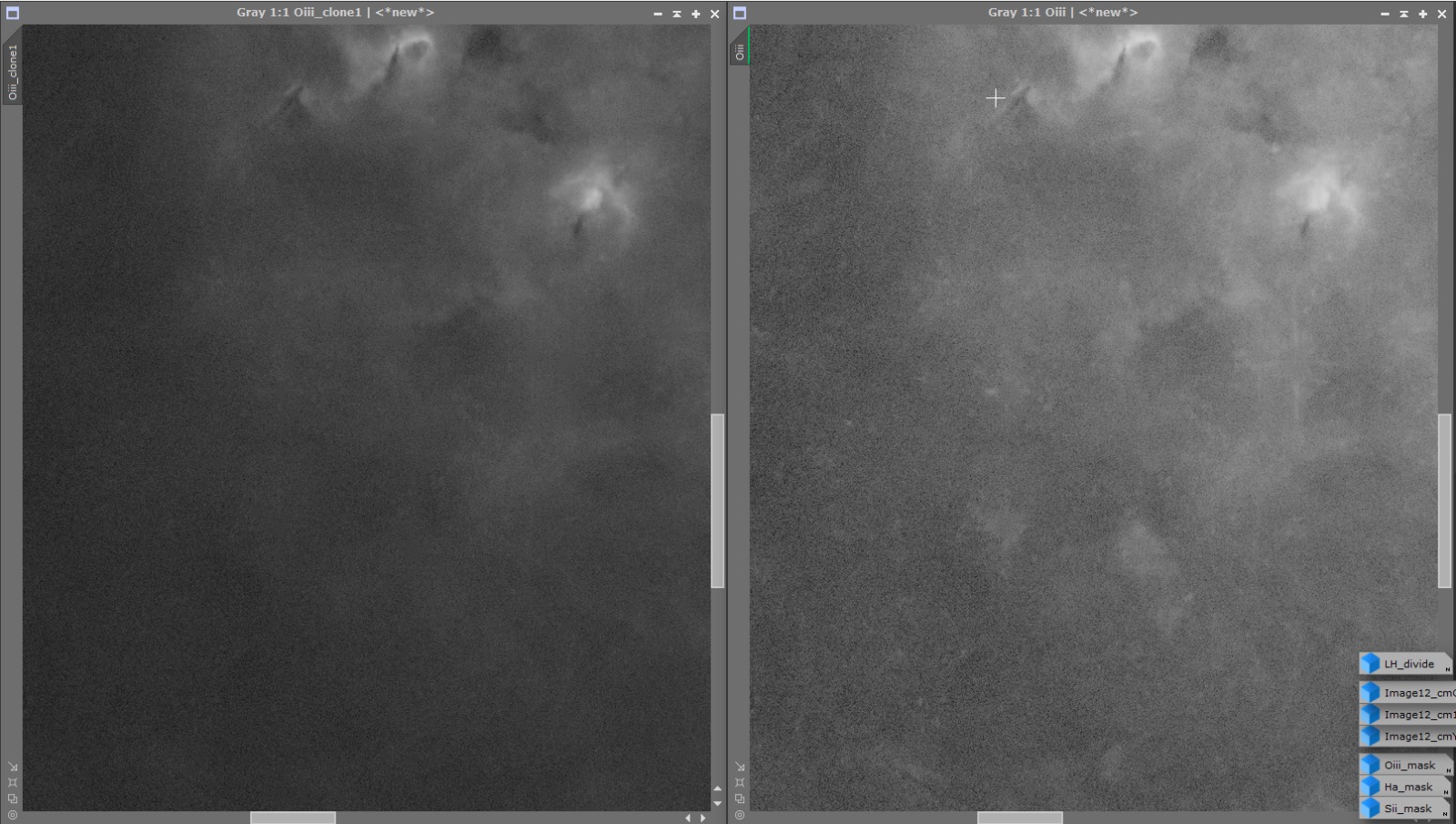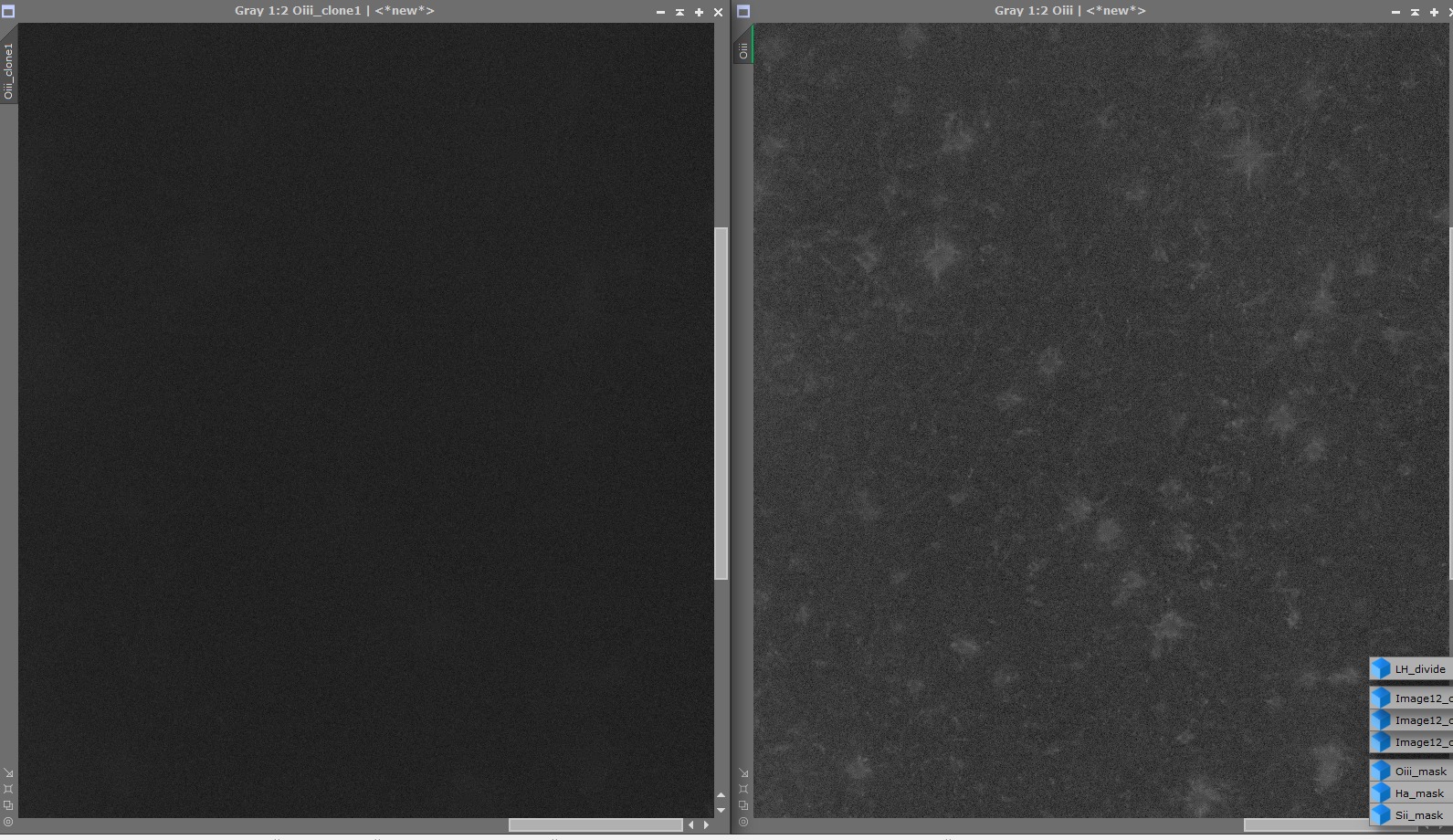Tony Gondola:
which might be an argument not to remove that stars at all from such images.
Perhaps, but "removed" is a strong word I propably shouldn't use, temporarily separated might be better. I'm unsure about whether one would be able to filter out all the smaller galaxies in any efficient way with a star mask anyway, if you were to keep them in the image throughout the process that is.
As far as I'm concerned it only matters if you want/need to process the image separately, very faint details may be a reason why. Using resampling as part of the process will maximise the results for galaxies at least (with slight issues towards big and bright stars). It's all possible to work around though. The faint galaxies and nebulosity picked up by SXT will be screened back into the image unless you choose to stretch the stars way less than the rest of the image.
Alan Brunelle:
Distant Luminosity:
I would like to point out one more thing that makes StarXTerminator irreplaceable: recognizing galaxies. Especially when it comes to displaying small galaxies in the background, these usually only become visible through the use of StarXTerminator, which makes it possible to edit them more finely.
True, as shown in the link I provided, but only if used with the right settings and even better if you upscale your image first which is pretty much mandatory. SXT removes a lot of galaxies too, without upscaling far to many still get picked.
Most concerning is the removal of nebulosity, as I also noticed for M33. I have developed ways to repair such damage, post SXT, that is completely faithful to the data. For nebulosity repair, typically it is not that time consuming.
On the other hand, to faithfully return the thousands of tiny (and even not-so-tiny) galaxies to my ExtraGalactic Traveler's view series takes me a great amount of time!

An ExtraGalactic Traveler's™ View of M31 - The Andromeda Galaxy - Including a View From Earth
Took me weeks, if not months of effort. If R. Croman improved SXT, I will be grateful, however the small size of some makes that unlikely. Most people don't worry about these small galaxies. That is a shame. But when they are the main subject of the image, it gets frustrating.
Protection of nebulosity, in case upsampling doesn't help with those, can easily be done with a mask before running sxt at all. Another method is to stretch the stars image as you would the background and just screen in those bits of nebula that are missing using layers in Photoshop.
Upsampling would greatly improve your results regarding galaxies, it will take more time to run the process, but well worth it in the end. SXT will be updated pretty soon I reckon.
My latest example using upsampling vs no upsampling, I don't think it could get a whole lot better than this. Except for the slight bright star issue that has to be resolved using the not upscaled result.

I haven't bothered to do more than a 2x upscale as any smaller galaxies than those already kept intact here would not matter. We are talking small specks and pixels like this one viewed in 15:1 as compared to the standard 1:5 view in PI:


And that's not even the smallest one. What it'll be like in the final image I don't know yet but I'm guessing a barely visible dot if anything. Smaller stuff would not add anything of meaning/value to the image as it most likely would be completely invisible.
Results may differ and the amount of re-sampling needed may vary. I'd suggest you give it a go and save yourself those weeks or months of effort 
*I'll be traveling during the next week, so will be unable to support my response with data. Upsampling at 2x is precisely what the image of M31 was because this was drizzled 2X. If you look at the .PNG version at full res (Rev D), you will see how smooth and detailed these small features are. Please understand that this image contains no stars (none other than ones affiliated with M31). 99.9% of these features in the non-M31 part of the field are NOT stars. Yet all were removed by SXT. Yes, and this after BXT, NXT, etc. So while I can concede that using those tools prior to SXT is a help, it's far from doing a perfect job. And for those like myself, for this sort of project, it's not even good. That said, this field is scattered with very small background galaxies and I concede for most of the work done by people here it is a great tool and could never be completely accurate without including too many stars in the actual result.
As I said, my issue for deep field galaxy field, that contain NO foreground (I e. Milky Way) stars, it is a critical issue. Most would care less for the loss of many small smudges. I believe that is the loss to ignorance. Not trying to be insulting to those who don't know what they can actually see with their optics, but more and more often I see proof when I see posts of images and the originator is so proud that they picked up hundreds, if not thousands of distant galaxies in an image of one of the typical, famous NGC galaxies. Please see

The NGC4725 Family in the Foreground of The Universe - An ExtraGalactic Traveler's™ Viewand the revisions as examples of this.
While SXT cannot be faulted for extracting smallish smudges, it continues to trouble me when I see edge on galaxies completely removed, or their cores extracted, and often cores of larger galaxies extracted in full or partially.
As for losses in emission nebulae, well what can you do?! Hopefully it gets better. In M33 so many parts of these features were affected in my image and so apparently for at least one other person here. Most who have done M33 or similar, probably use SXT as a one click solution, thinking or caring little about these losses. Indeed, probably never notice in the haste to complete what otherwise ends up still being a wonderful colorful final image. The solution is not in masking. That tends to be tedious because of the hit or miss nature of the artifacts. It ends up being unfaithful in the end, mostly, and invites just painting the data to look "kinda" like it should. I agree that if the Stars-only image is to be screened back into the starless image, with no difference in stretch or many other processes, then all will be good. But then why use SXT? Most use SXT as a means to do star reduction (using such as the Blanshan method), or else modify either the starless or Stars-only image making the accuracy impossible to recreate. There is a far better solution that I can't go into here tapping on my cell phone.
I should conclude that SXT-caused artifacts are not inevitable, nor seen in every field. But they can and do occur often enough to never use SXT without doing a thorough job by inspecting the resulting image for problems. It is easy to do blinking between images treated and untreated by SXT (even more so now with the new PI updates). Or one can do a strongish screen stretch on the Stars-only image to look for nebulosity that "should not be there"! If you see it in the Stars-only, then it ain't in the starless image! Know that.








